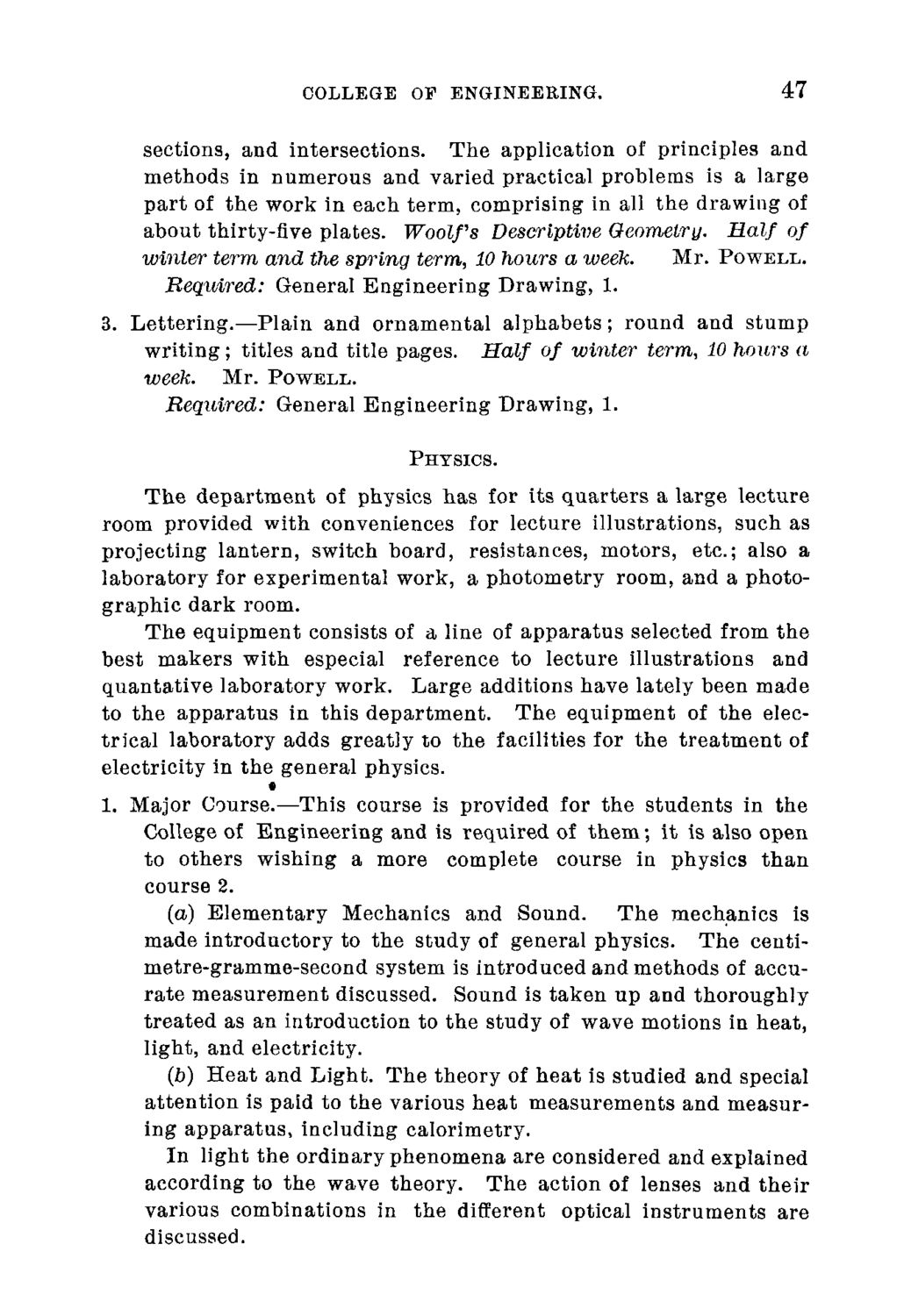| |
| |
Caption: Course Catalog - 1891-1892
This is a reduced-resolution page image for fast online browsing.

EXTRACTED TEXT FROM PAGE:
COLLEGE OP ENGINEERING. 47 sections, and intersections. The application of principles and methods in numerous and varied practical problems is a large part of the work in each term, comprising in all the drawing of about thirty-five plates. Woolf's Descriptive Geometry. Half of winter term and the spring term, 10 hours a week. Mr. POWELL. Required: General Engineering Drawing, 1. 3. Lettering.—Plain and ornamental alphabets; round and stump writing; titles and title pages. Half of winter term, 10 hours a week. Mr. POWELL. Required: General Engineering Drawing, 1. PHYSICS. The department of physics has for its quarters a large lecture room provided with conveniences for lecture illustrations, such as projecting lantern, switch board, resistances, motors, etc.; also a laboratory for experimental work, a photometry room, and a photographic dark room. The equipment consists of a line of apparatus selected from the best makers with especial reference to lecture illustrations and quantative laboratory work. Large additions have lately been made to the apparatus in this department. The equipment of the electrical laboratory adds greatly to the facilities for the treatment of electricity in the general physics. 1. Major Course.—This course is provided for the students in the College of Engineering and is required of them; it is also open to others wishing a more complete course in physics than course 2. (a) Elementary Mechanics and Sound. The mechanics is made introductory to the study of general physics. The centimetre-gramme-second system is introduced and methods of accurate measurement discussed. Sound is taken up and thoroughly treated as an introduction to the study of wave motions in heat, light, and electricity. (b) Heat and Light. The theory of heat is studied and special attention is paid to the various heat measurements and measuring apparatus, including calorimetry. In light the ordinary phenomena are considered and explained according to the wave theory. The action of lenses and their various combinations in the different optical instruments are discussed.
| |